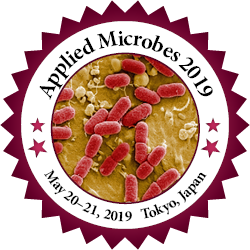
Hauwa, H
Sokoto State University, Nigeria
Title: BIOSORPTION AND TOLERANCE POTENTIALS OF SOME BACTERIA SPECIES TO HEAVYMETAL FROM CONTAMINATED GOLD MINING SOIL IN ABARE ZAMFARA STATE
Biography
Biography: Hauwa, H
Abstract
Soil and water pollution are major global concerns of environmental pollution globally,the release of contaminants into the environment by human activities has increased over the past decades. Soil contamination by mining activities has attracted considerable public attention and the magnitude of the problem in the sampling site calls for immediate action. The use of microorganisms for the recovery of heavy metals from soil sediments has generated growing attention because of the inadequacy and high cost of conventional method of metal treatment technologies. Application of natural and abundant sorption material known as biosorbents comprising of microbial biomass and agricultural waste has drawn attention in the scientific world.
This research was aimed to further exploit the potentials of some bacterial specie for the removal of heavy metal from contaminated mining soils, this bacterial species were isolated from the mining soil and the soil was analyzed for it heavy metal content. The toxic metal of interest for biosorption in this work were lead, cupper, and chromium and the biosorbent used were Bacillus firmus , Bacillus brevis and pseudomonas aeruginosa.
This bacterial species were tested for their tolerance ability in different heavy metal concentration It was recorded that pseudomonas aeruginosa was tolerant to lead at 800mgl-1Bacillus lentus to cupper at 860mgl -1 and Bacillus firmus to chromium at1000mgl-1. The biosorption ability was also studied for 7days and was calculated using beer lambert’s law of biosorption percentage and they all showed good uptake ability with Bacillus firmus removing 96.37% cupper, 93.54% lead and 39.24% chromium. Bacillus brevis remove 97% Cupper, 98% lead and 36% chromium, Pseudomonas aeruginosa was able to absorb 97% each of copper and lead and also 36% of chromium. This is a very important and economic friendly technology for heavy metal bioremediation at cheaper cost.

